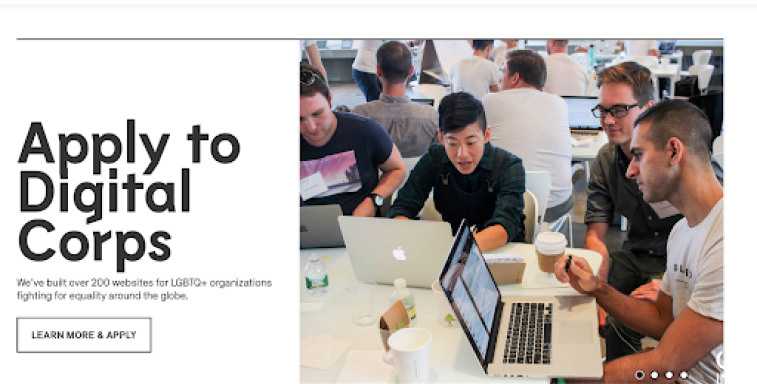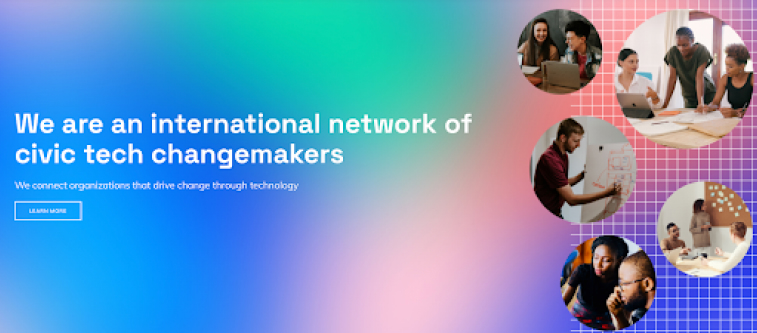How to Address Tech Skills Shortage With Diversity Hiring

Intro
Diversity hiring is among 5 key priorities for companies, along with the focus on improving the quality of hire, increasing retention rate, improving time-to-hire, and growing the talent pipeline.
But why is it such a critical focus? Let’s explore some key statistics to see the reasons behind this priority. Globally, the talent shortage in the tech industry has reached 76% (compared to only 4% in 2020!).
When you connect the dots, it makes much more sense to go after diversity hiring.
It’s not merely a passing trend but a thoughtful strategy aimed at addressing one of the most pressing challenges in the current tech market.
But what if — at let’s keep it just a hypothesis for the moment — one of the reasons for the skills shortage is the way traditional recruitment overlooks talented specialists?
However, implementing a truly comprehensive diversity hiring strategy that doesn’t compromise your company’s integrity or the well-being of its employees and new hires is easier said than done.
The conventional approach of setting (KPIs) and pushing your team to achieve diversity goals, which has been the norm for some time, often runs counter to the very principles diversity initiatives aim to achieve.
This is why we’re here to guide you through practical steps that can genuinely impact your hiring processes while ensuring they remain respectful and considerate, especially to individuals from non-traditional backgrounds.
How Diversity Influences Hiring

Diversity hiring seeks to create a workforce that reflects the varied backgrounds, experiences, and perspectives of society.
It’s about intentionally bringing together individuals from different demographic groups, such as race, gender, ethnicity, age, sexual orientation, disability, and more, into an organization’s workforce.
Here are key points why diversity hiring on recruitment is profound and far-reaching:
Broadens the talent pool
Instead of drawing from a limited, homogenous group, organizations actively seek candidates from diverse backgrounds. This not only ensures a more comprehensive range of skills and experiences but also fosters innovation and creativity. When you bring together individuals with different viewpoints, problem-solving approaches become more dynamic, leading to fresh ideas and solutions.
Helps meeting employee needs
Having employees who can relate to and empathize with a wide range of customers is a significant advantage. It helps in tailoring products and services to meet the unique needs of various demographic segments.
Makes an impact on attracting and retaining candidates
Diversity hiring isn’t solely about recruitment practices; it extends to the workplace culture as well. Companies committed to diversity and inclusion invest in creating an environment where all employees feel valued, respected, and included. This not only attracts diverse talent but also retains it, reducing turnover and associated costs.
Building a Diversity Hiring Strategy
Once you recognize the importance of diverse perspectives and experiences, you decide to focus on diversity hiring. It’s closely connected to the way you build the strategy inside your company — let’s dive in.
Step 1: Follow the 3 A’s
“3 A’s” – Ask, Align, Act – is a golden rule for effective diversity hiring. It starts with an extremely valuable ‘Ask’ step, which means that you start by evaluating a current state of Diversity, Equity, and Inclusion (DEI) in your talent pipeline.
Go to the people who are open to share their opinion with you. Ask them what they really need, how they want to be treated. At this very first stage, the focus should be entirely on their needs. This way, you can find the solution that actually solves the problem rather than making chaotic actions that can end up causing frustration among potential candidates.
Here are some questions you may ask during your interview:
- What kind of support or resources have been most beneficial for you in your career?
- Have you encountered any obstacles that you think could have been addressed with better workplace policies or practices?
- Are there specific ways you’d like to see our organization become more inclusive and supportive?
- How can we make the onboarding process more effective and welcoming for you and others like you?
- What types of professional development opportunities would you find most valuable?
- Are there any company policies or practices that you feel might unintentionally exclude certain groups?
- Have you had any experiences where you felt your background wasn’t fully understood or appreciated?
- Do you have any suggestions for creating a more inclusive work environment where everyone feels valued and respected?
- What kind of work-life balance or flexibility would enable you to perform at your best?
- Is there anything else you’d like to share about your experiences or needs that we haven’t covered?
Step 2: Rethink goals
People look for a safe, supportive, and inclusive space. It’s critical that it comes from the top. – Diana Ellsworth
Scrap the vague ambitions and focus on building a team that’s not just a box-ticking exercise of different identities. What you’re aiming for is a workforce that’s responsible, dependable, and genuinely inclusive, especially for specialists who’ve been left in the shadows.
Look at the key questions you may discuss with your team:
- Does everyone know and agree with what the DEI work aims to achieve?
- What will the DEI work do for everyone, including employees, customers and the environment?
- What role will the company’s most influencing people play?
- Does everyone share common beliefs about how to approach identity and difference?
- What does success look like?
Step 3: Ensure inclusive job descriptions
Now that you have a deep understanding of the goals, values, and results, you can get to the ‘Act’ part.
Take a moment to go over your job descriptions removing any potential biases and ensuring they resonate with a diverse audience. Creating an inclusive job description is about focusing on the skills, qualifications, and values that truly matter for the role. By eliminating biased language and being mindful of the way you present the role, you create a more effective candidate pool.
Do’s when crafting a job description:
👌Use terms like “they,” “their,” or rephrase sentences to avoid gender-specific language.
Example: “The ideal candidate will demonstrate their proficiency in programming.”
👌 Emphasize the skills, experience, and qualifications required for the role.
Example: “Strong problem-solving skills and experience with Python programming required.”
👌Mention your commitment to diversity and inclusion in the company culture.
Example: “We are an equal opportunity employer dedicated to building a diverse workforce.”
👌Use realistic and unbiased language to describe the role and responsibilities.
Example: “Collaborate with team members” instead of “Must be the best team player.”
Don’ts when creating a job description:
🚫 Don’t use job titles that might discourage certain demographics.
Example: Instead of “Salesman,” use “Sales Representative.”
🚫Don’t use words that are associated with a specific gender.
Example: Instead of “ninja” programmer, use “skilled” programmer.
🚫Don’t use language that reinforces stereotypes or biases.
Example: Avoid phrases like “work hard, play hard,” which can exclude certain individuals.
🚫Don’t use language that could be interpreted as discriminatory.Example: Do not include age-related phrases like “recent graduate.”
Step 4: Employ diverse sourcing
A diverse sourcing should be an ongoing initiative that lets you reach a wider and more diverse candidate pool. Engage with diverse professional networks, organizations, job boards, and community outreach programs.
Diverse professional networks

Depending on your industry and the specific groups you want to engage with, you can find numerous organizations that align with your goals for diversity and inclusion. Some of them include:
Network | Description | Type of support |
Out in Tech | Supports LGBTQ+ individuals in the tech industry | Events, panels, and resources for networking and professional growth. |
National Society of Black Engineers (NSBE) | NSBE is dedicated to increasing the number of black engineers in various industries. | Mentorship, networking opportunities, and support for professional development. |
Women in Technology (WIT) | WIT aims to empower and support women in the technology industry. | Networking events, workshops, and mentorship opportunities. |
American Association of People with Disabilities (AAPD) | AAPD advocates for the rights of people with disabilities. | Resources for professional development, networking, and mentorship. |
Specialized Job Boards

Job board | Description |
DiversityJobs | A comprehensive job board focused on connecting diverse candidates with employers who value diversity and inclusion. |
iHispano | A platform that specifically targets Hispanic and bilingual professionals for opportunities across various industries. |
DisabilityJobSite | Specializes in job opportunities for individuals with disabilities, promoting a more inclusive workforce. |
Community Outreach Programs

Engage with community outreach programs that aim to uplift individuals from diverse backgrounds. These programs might include mentorship initiatives, career fairs, workshops, and educational partnerships. Collaborating with such programs not only expands your candidate pool but also demonstrates your commitment to making a positive impact on local communities.
Program | Description |
Code for All | A global network of organizations that use technology and open data to address social challenges in their communities. They work on projects related to civic engagement, education, healthcare, and more. |
TechSoup Global | A nonprofit that supports NGOs around the world by providing them with technology resources, including software, hardware, and technical expertise. |
Open Source Projects for Social Good | Many open-source projects aim to solve social and humanitarian issues. Developers and IT experts can contribute their skills to these projects from anywhere in the world. |
Step 5: Refine your interview approach
Biases can have an impact on the hiring process in ways you’re not even aware of. Biased decisions might miss out on great people, keep unfair imbalances going, and stop the team from getting fresh ideas. Yet, there are quite a few ways you can go about it.
Unbiased Screening
Unbiased screening ensures that decisions are made solely on merit and relevant criteria. Whether you’re screening job applicants, evaluating research papers, or reviewing product options, here are some conversational steps to help you stay unbiased:
- Use blind screening, removing personal information like names, genders, or other characteristics that could trigger biases. Focus solely on the relevant information.
- When reviewing multiple candidates or options, randomize the order in which you evaluate them. This prevents any order-related bias.
- If you’re working with a team, encourage anonymous collaboration. This way, team members can share their thoughts without the fear of being influenced by others.
- Keep detailed records of the screening process, including decisions made and reasons behind them. This transparency can help address any concerns about bias later on.
- After the screening is complete, take some time to reflect on the process. Were there any instances where bias might have crept in? What can be done differently next time?
Structured Interviews
Think of structured interviews like a well-organized job interview game plan. You’ve got predefined questions, and you ask every candidate the same ones. No special treatment or trick questions. Use this format to ensure consistency and fairness in the evaluation of candidates. Here is the process explained in a nutshell:
- Come up with a list of questions that help you find the right candidate for the job. Make sure every candidate gets asked the exact same questions.
- Score their answers based on what you’re looking for. Ask questions in the same order and give each candidate the same amount of time.
- Write down what they say and how they act during the interview.
- After all the interviews, compare your notes and scores to pick the best fit. Let candidates know how they did and provide helpful feedback.
Step 6: Use social media strategically
Showcase your commitment to diversity and inclusion in your employer branding — this way, your recruiting efforts will be aligned with what you show on social media.
Website and social media profiles
Start by updating your company’s website and social media profiles. Make sure they convey a welcoming and inclusive environment. Use visuals, language, and branding that represent diversity.
Testimonials and success stories
Share testimonials and success stories from employees of various backgrounds. These stories can emphasize career growth, personal experiences, and the positive impact of diversity within your company. Starbucks does a great job here by sharing real stories, emphasizing how it creates an inclusive environment.

Share diversity events and achievements
Publicize events, workshops, seminars, or conferences related to diversity and inclusion that your organization sponsors or participates in.
Accessibility and inclusivity
Ensure that your website and social media content are accessible to all users, including those with disabilities. Use alt text for images, provide captioning for videos, and use inclusive language in your posts.
Feedback mechanism
Encourage open feedback from employees, candidates, and website visitors about your diversity and inclusion efforts. Show that you’re actively listening and willing to make improvements.
Consistency in messaging
Ensure that your commitment to diversity is consistent across all online platforms. The message should align with your company’s values and be reflected in all communications.
Transparency
Be transparent about your goals and progress in improving diversity and inclusion. Share annual reports or updates on your website and social media to hold yourself accountable.
Wrapping up
Is diversity hiring here to stay, considering its impact on recruiting efforts?
Diversity brings together a wealth of different perspectives and experiences, which can lead to increased innovation and creativity for companies prioritizing diversity. Such teams are better equipped to solve complex problems from various angles, often yielding unique and groundbreaking solutions.
Furthermore, in an increasingly interconnected and globalized world, diverse teams possess a greater capacity to understand and serve diverse markets. Companies that mirror the demographics of their customer base gain a distinct competitive edge.
In the future, as top talent places greater importance on diversity and inclusion in their career choices, companies that demonstrate a commitment to these values will succeed in attracting and retaining the best employees.
Moreover, organizations that champion diversity build stronger reputations and brands. Customers, partners, and investors favor companies with genuine commitments to social responsibility and equality.
Finally, a diverse and inclusive workplace fosters a sense of belonging among employees, resulting in positive impacts on mental well-being, job satisfaction, and overall productivity. This, in turn, leads to better business outcomes.
Think about how diversity hiring can transform your recruiting efforts and start





